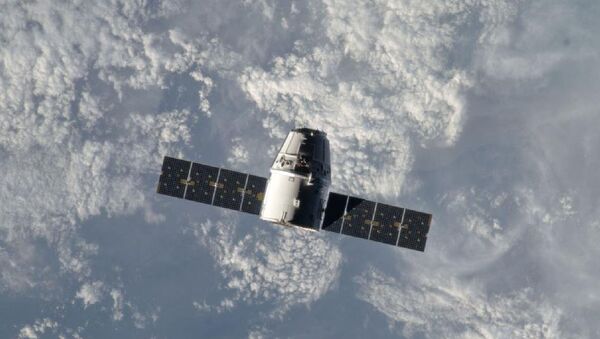MOSCOW, September 21 (RIA Novosti) - The United States has successfully launched the SpaceX Dragon spacecraft delivering supplies to the International Space Station (ISS), the United States National Aeronautics and Space Administration (NASA) stated on Sunday.
"The SpaceX Dragon spacecraft is flying free to begin its pursuit of the International Space Station," NASA wrote on its official website.
The spacecraft was lofted into orbit by the Falcon 9 rocket at 1:52 a.m. local time (5:52 GMT) after its launch from Space Launch Complex-40 at Cape Canaveral Air Force Station in Florida, according to NASA. The spacecraft will deliver some 5,000 pounds of supplies to ISS through a $1.6 billion NASA Commercial Resupply Services contract. Supplies will include science experiments, technology demonstrations, and materials for the crew's 255 science and research investigations to be carried out during the station's Expeditions 41 and 42.
The International Space Station-Rapid Scatterometer (ISS-RapidScat) is an investigation which will monitor ocean winds to calculate surface speed and direction used in weather forecasting and hurricane monitoring. The Dragon is also carrying a 3-D printer to be used to quickly manufacture parts and technology needed by the station. This will mark the first time a 3-D printer has been used in space. Studies on the effect of microgravity on animals will also be conducted using mice delivered by the Dragon as well as a new plant study.
The spacecraft is scheduled to arrive to ISS at 7:04 a.m. local time (11:04 GMT) on September 23. Dragon will return to Earth in mid-October for a splashdown in the Pacific Ocean, west of Baja, California. The spacecraft is expected to bring back some 3,200 pounds of supplies.
SpaceX designed Falcon 9 as a two-stage rocket to transport satellites and the Dragon spacecraft into orbit. Dragon made history in 2012 when it became the world's first commercial spacecraft to deliver cargo to the ISS and safely return to Earth. Although Dragon currently only carries supplies, the free-flying aircraft was also designed to transport humans, a project that will be realized under an agreement with NASA in two to three years.


